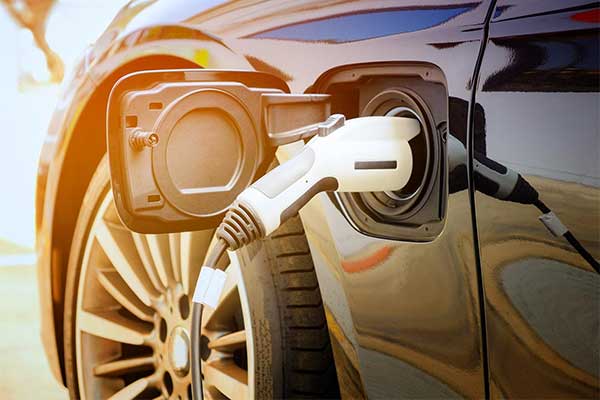- Norway is investing heavily in building five gigafactories for manufacturing batteries for electric cars.
- However, the environmental effect of these cars could become questionable if the materials in the batteries are not recycled. Associate Professor Sulalit Bandyopadhyay, a battery expert in the Department of Chemical Engineering at NTNU, said the industry can be helped by making batteries that are much easier to recycle, but the economic costs of doing so are prohibitive.
- The environmental effect of electric cars can be mitigated if the materials in the batteries are recycled and reused.
Electric cars require batteries.
This is a billion-dollar industry that Norway is investing heavily in. Five gigafactories are currently being built in Norway. All of these will manufacture batteries for electric cars, and the market could be huge.
How environmentally friendly this battery production is depends on how we manage to solve the problem of reuse.
“The problem now is that there’s a division between the companies that make the batteries and those that will recycle them. The way the batteries are produced make them unnecessarily difficult to recycle,” says Sulalit Bandyopadhyay, an associate professor and battery expert in the Department of Chemical Engineering at NTNU, the Norwegian University of Science and Technology.
What the four new factories have in common is that they will all manufacture battery cells for the batteries.
“We can help the industry by making batteries that are much easier to recycle,” says Bandyopadhyay.
This focus could quickly become even more important.
Strongly growing market
Almost four out of five new cars in Norway are now electric vehicles. Worldwide, the proportion of new EVs is around 10 percent, but that number has increased sharply in recent years. Last year, almost eight million new EVs hit the roads.
The batteries in all these cars contain rare metals that are expensive, sometimes difficult to obtain and often very environmentally unfriendly.
The environmental effect of all these electric cars might become more questionable if we don’t manage to reuse the materials in the batteries.
“We’ll have to recycle electric car batteries in the future,” says Bandyopadhyay.
The batteries could be designed and produced in new ways that make this much, much easier.
The associate professor has worked with batteries and recycling for many years. The importance of this work is reflected in how much NTNU is investing in the field.
A few years ago, the work on battery recycling processes at NTNU involved a group of just three or four researchers. Now Bandyopadhyay heads a larger group that has this focus as its field of expertise, and he oversees the HolE-LIB project that looks at how the lithium in the batteries can be more easily recycled.
Economics play in
The main reasons battery factories are not making the batteries more recyclable are clearly economic.
“Yes, it’s more expensive to make batteries that are easier to recycle. But the day that the regulations for recycling become stricter, it will cost money to redesign and rebuild battery production,” says Bandyopadhyay.
He and his group already work closely with several industry players, including Hydro, Vianode, Hydrovolt, Glencore Nikkelverk and Morrow.
Many battery factories needed
Five giant battery factories for EVs are currently being built in Norway. They are located in:
- Mo i Rana—Freyr Battery company.
- Arendal—Morrow Batteries.
- Orkanger—Elinor Batteries.
- Stavanger—Beyonder.
- Fredrikstad—Hreinn.
A few years ago, SINTEF, Scandinavia’s largest independent research institute, estimated that Europe alone will need 55 new battery factories before 2030 to cover the need. By 2050, 600 such factories will be needed worldwide.
Use for other purposes difficult
Researchers at NTNU have also looked at whether fixing old batteries instead of just recycling them would be possible, and perhaps then using these batteries for purposes other than cars afterwards.
Bandyopadhyay points out that when an electric car battery is no longer usable for an EV, 80 percent of its charge is still available.
Potentially the batteries could be used in other areas instead, such as for street lighting or various household purposes.
The two most common battery types are NMC batteries which contain nickel, manganese and cobalt, and LFP batteries which contain lithium, iron and phosphorus.
LFP batteries are generally unsuitable to use for other purposes. NMC batteries also run into problems, because they have to eventually be recycled anyway after being used for something other than cars. But the technical obstacles are not the whole problem.
“We can imagine replacing some of the defective cells in the batteries that have become inadequate for cars and then using these batteries for something else. But here we run into problems with legalities and who bears responsibility for the battery afterwards. Is the battery factory or the person who repaired the cells responsible?” says Bandyopadhyay.
Methods are getting better
“All Li-ion batteries have in common that they use graphite as the anode material. Currently this is not recycled, but at Vianode we’ve developed a method to also be able to recycle the graphite,” says Gunstein Skomedal, product manager for battery materials at Vianode.
NTNU is one of Vianode’s partners who are working on the recycling of graphite in the SUMBAT project. This work is supported by Innovation Norway, the Research Council of Norway and SIVA.
“This work is important so that we’ll be able to recycle all the valuable materials in the battery in the future,” says Skomedal.
Battery recycling is a complicated field. But the challenges must be solved if we are to reap the full benefit of converting to electric cars.
The related research is published in the journal New Directions in Mineral Processing, Extractive Metallurgy, Recycling and Waste Minimization.
—
Publication Referenced in the Article:
Erik Prasetyo et al, Nickel Matte as Novel Reductant in Galvanic Leaching of Spent Lithium-Ion Battery Black Mass, New Directions in Mineral Processing, Extractive Metallurgy, Recycling and Waste Minimization (2023). DOI: 10.1007/978-3-031-22765-3_13
This article has been adapted from source material published by Norwegian University of Science and Technology.








Comments